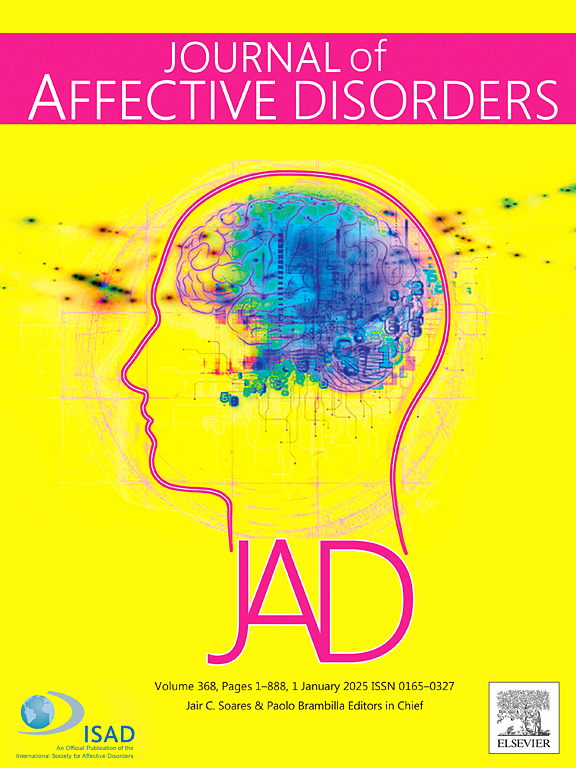Temporal trends in prevalence for depressive disorders among women of childbearing age: Age-period-cohort analysis 2021
IF 4.9
2区 医学
Q1 CLINICAL NEUROLOGY
引用次数: 0
Abstract
Background
Depressive disorders (DD) are significant mood disorders with a notable female preference, especially affecting the well-being of women of childbearing age (WCBA). This population with DD was notably associated with severe complications during the perinatal period, leading to unfavourable maternal mortality and morbidity.
Methods
This study extracted data from the Global Burden of Disease Study (GBD) 2021. We analysed the number of cases, calculated the age-standardized prevalence rate, and performed the age-period-cohort (APC) model to estimate prevalence trends and age, period, and cohort effects from 1992 to 2021.
Results
From 1992 to 2021, the global number of WCBA with DD surged by 59.46 %, reaching 121 million cases up to 2021. India, China, and the USA had over 40 million prevalence cases, accounting for 36.17 % of global prevalence. The global net drift of DD prevalence among WCBA was −0.13 % per year (95 % CI: −0.17 % to −0.09 %). Age effects demonstrated similar patterns that the prevalence risk rose with age. All SDI regions showed unfavourable prevalence risks surging in the period of 2017–2021. The cohort risk of prevalence increased globally in younger generations after the 1987–1996 cohort.
Conclusion
Although the overall temporal trend (net drift) presented a downward trend in DD prevalence among WCBA over the past three decades, the prevalence cases had continued to rise with unfavourable period and cohort effects. Since COVID-19 triggered a massive increase in the prevalence of depressive disorders worldwide, there is an urgent need for stakeholders and policy makers to strengthen mental health-care systems.
求助全文
约1分钟内获得全文
求助全文
来源期刊

Journal of affective disorders
医学-精神病学
CiteScore
10.90
自引率
6.10%
发文量
1319
审稿时长
9.3 weeks
期刊介绍:
The Journal of Affective Disorders publishes papers concerned with affective disorders in the widest sense: depression, mania, mood spectrum, emotions and personality, anxiety and stress. It is interdisciplinary and aims to bring together different approaches for a diverse readership. Top quality papers will be accepted dealing with any aspect of affective disorders, including neuroimaging, cognitive neurosciences, genetics, molecular biology, experimental and clinical neurosciences, pharmacology, neuroimmunoendocrinology, intervention and treatment trials.
 求助内容:
求助内容: 应助结果提醒方式:
应助结果提醒方式:


